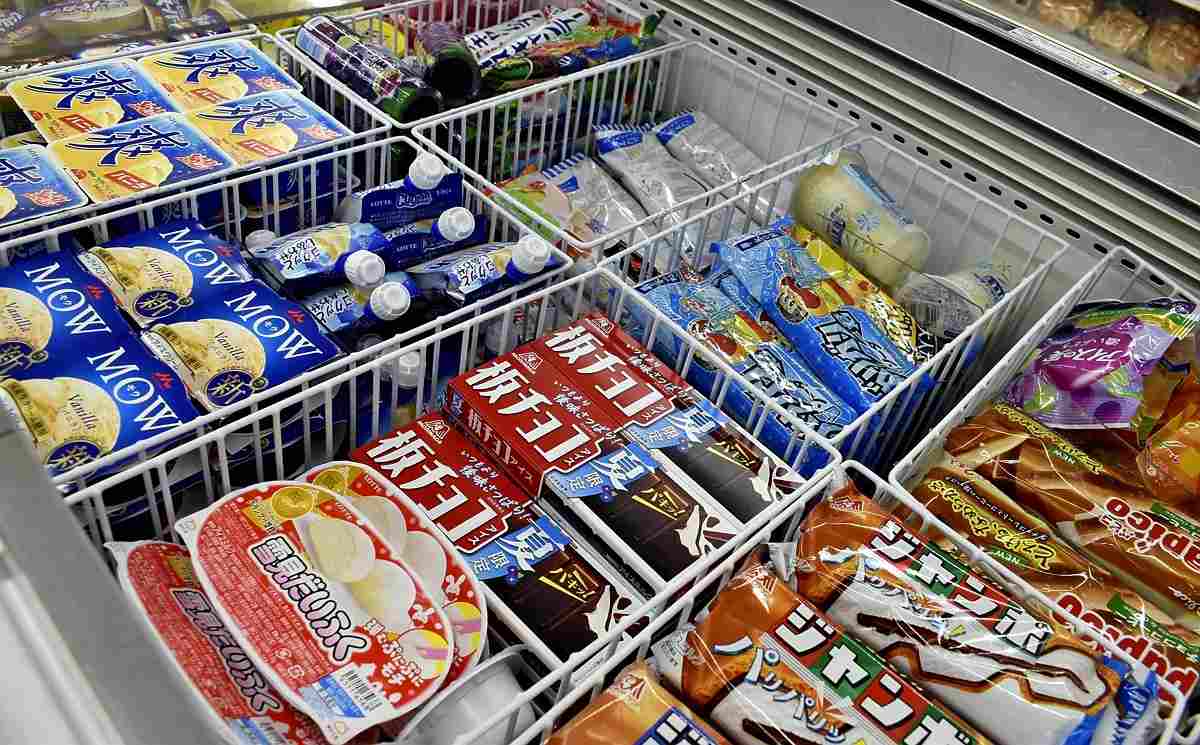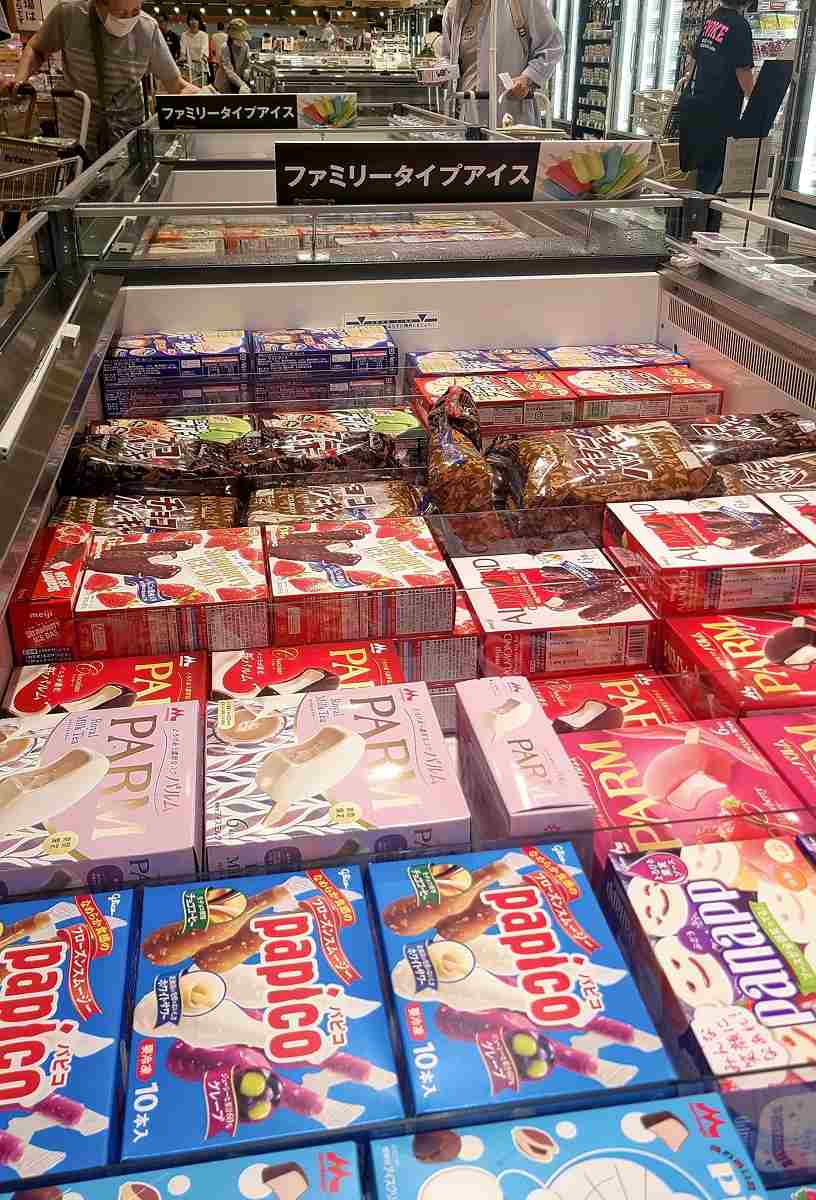Japanese Ice Cream Proving to be Hot Seller Overseas; Trend Seen as Result of Visitors Wanting Unique Tastes After Returning Home

A display case of ice cream products are seen at a supermarket in Yotsukaido, Chiba Prefecture.
15:55 JST, July 12, 2024
When it comes to Japanese ice cream, they’re screamin’ for it overseas, and companies here are making a cool profit as they rush to meet the demand.
Exports of Japanese-made ice cream, shaved ice and other summer goodies reached a record high in 2023, an offshoot of the surging popularity among foreign visitors who arrive amid sweltering temperatures.

A display case of ice cream products are seen at a supermarket in Yotsukaido, Chiba Prefecture.
With Asian countries leading the way, exports of ice cream and ice products hit a record high of ¥7.9 billion in 2023, up 23.5% from the previous year, according to Finance Ministry trade statistics.
In terms of volume, the exports increased by 19.8% to 10,138 tons, with more than 60% heading to the top three destinations of Taiwan, Hong Kong and China.
According to manufacturers and other sources, visitors to Japan appear to be impacting the growth in exports.
A wide variety of products is available in terms of taste and shape, and those featuring Japanese flavors such as azuki bean and matcha green tea are especially popular among tourists. They then seek out such tastes after returning home, leading local retailers to increase imports by stocking up on the products.
The products sell well despite sharp markups in price. Meiji Co.’s “Essel Super Cup,” an ice cream cup that comes in various flavors, is exported to Taiwan and other countries and sells for twice the price found in Japan.
The markup is due to the need for ships equipped with refrigeration facilities, which increases transportation and other expenses.
A Meiji spokesperson said that Japanese products sell well despite being “categorized locally as a premium ice cream.”
With the domestic market expected to reach a peak due to the declining population, manufacturers will likely develop sales channels as overseas demand continues to surge.
Summer trends
On July 7, the temperature in Shizuoka City’s Suruga Ward soared to 40 C, the first time that level was reached in the country this year. According to major convenience store chain Lawson Inc., ice cream sales for the two-day period of July 6-7 were up about 50% from the previous week.
In the industry, it had generally been held that if the temperature is too high, cream products with strong flavors will sell much less than ice products such as ice pops. But in recent years, record-high temperatures combined with the COVID-19 pandemic have been keeping people inside more, which it is believed to result in cream-based products doing well even in summer
In response to this trend, Morinaga Milk Industry Co. promotes its ice products in June-July and ice creams in August-September.
The Japan Ice Cream Association announced sales for fiscal 2023 reached ¥608.2 billion, up 9.9% from the previous year, and the combination of the hottest year on record and price increases resulted in a fourth consecutive year of record sales.
One reason for the expanding market is that manufacturers are becoming more precise in forecasting demand. Since 2017, Morinaga & Co. has been setting its production schedule based on weather forecast data provided by the Japan Weather Association.
The aim is to prevent shortages due to sudden swings in demand. “Demand tends to increase when temperatures rise rapidly, such as at the end of the rainy season,” a company spokesperson said. “It is important to get the timing right.”
"Business" POPULAR ARTICLE
-

Japan Govt Adopts Measures to Curb Mega Solar Power Plant Projects Amid Environmental Concerns
-

Core Inflation in Tokyo Slows in December but Stays above BOJ Target
-

Major Japan Firms’ Average Winter Bonus Tops ¥1 Mil.
-

Institute: 2026 Condo Supply in Tokyo Metropolitan Area Forecast to Increase by 2.2%
-

Mcdonald’s, Starbucks in Japan Move Away from Paper Straws Amid Customer Dissatisfaction
JN ACCESS RANKING
-

Japan Govt Adopts Measures to Curb Mega Solar Power Plant Projects Amid Environmental Concerns
-

Core Inflation in Tokyo Slows in December but Stays above BOJ Target
-

Major Japan Firms’ Average Winter Bonus Tops ¥1 Mil.
-

Tokyo Zoo Wolf Believed to Have Used Vegetation Growing on Wall to Climb, Escape; Animal Living Happily after Recapture
-

JAL, ANA Cancel Flights During 3-day Holiday Weekend due to Blizzard


























